Metagame
8min 3sec read
What does metagame mean to us, and why should you care about it while you’re building a team?
Written by Wolfe Glick
Teambuilding / Abstract Building Blocks
One of the most common terms heard when talking about competitive Pokémon is “the Metagame”. Technically speaking, metagame simply means “game within a game”, which I know wasn’t especially helpful for me when I first started playing. So, functionally, what is the metagame and why do we care?
What is a metagame?
The rules dictate which Pokémon can or cannot be used, and these rules change at least once a year. This is called a format or a ruleset. The amount of Pokémon that are legal vary widely: some years barely over 100 species of Pokémon are legal, and some years it’s closer to 1000. However, regardless of the number of Pokémon legal, the distribution of their use isn’t going to be even. There’s no ruleset where you’re going to see Metapod with high usage. Not all Pokémon are created equally, and as such not all Pokémon are used equally.
Metagame is the term used to describe which Pokémon are popular and which aren’t. If you’re new to VGC, you might have balked at the idea of learning nearly 1000 Pokémon in order to play competitively. However, functionally speaking, you could probably win tournaments while only knowing the top 50 or so, or in some cases even less.
The metagame is specific to whatever context you will be battling in. If you’re playing on the ladder, the metagame’s context is going to be very general, and you’re going to see a lot of popular Pokémon. If you’re going to your weekly local tournament, or playing versus one of your close friends, there’s still a metagame: the metagame is whatever Pokémon are popular there! When we talk about metagames, we’re discussing the concept broadly, which roughly describes “what Pokémon people in general are using right now”, but it’s important to think about whether there’s a more specific contextual metagame that the team you’re making will battle in.
It’s worth noting that the metagame is a concept and not something concrete. A metagame is practically useful to you because it describes which Pokémon you are likely to play against. A metagame is more than just raw usage statistics or popular teams– rather, it loosely encapsulates which Pokémon, Pokémon combinations, or teams people currently view as favorable. There’s never one “right answer” about what the metagame is at any moment in time. In this article, we’ll define what metagame means to us– and how we keep track of how a metagame grows over time.
EXAMPLE
The metagame is the reason why some Pokemon may struggle at one point in a format but shine at another point despite the format not changing. 2013 was a format where Landorus-Therian (Ground/Flying-type) and Thundurus-Incarnate (Electric/Flying-type) both shone, and as the format progressed their usage climbed higher and higher. Then at the World Championships, Mamoswine (who had a particularly good matchup against both Pokemon) ended up winning the whole thing.
Why should I care about the metagame?
The metagame is incredibly relevant to consider when building a team, no matter who you are. You cannot give yourself the tools to beat your opponents without first considering what your opponents are going to be using. Each Pokémon and each team has weaknesses, and deciding which weaknesses you are unlikely to play against and which ones need to absolutely be accounted for is a skill in teambuilding that can take you very far.
Importantly, metagames merely describe what your opponents are likely to bring. Some people treat a metagame as a user manual for building their own team, but that is entirely the teambuilder’s decision. It is not necessary to build your own team out of the elements that you recognize in the known metagame, but if you want to succeed in games, you must understand and respect the threats that you identify as part of it.
EXAMPLE
In 2012 I placed second at the World Championships with Exeggutor. Exeggutor was a great defensive Pokemon because of it’s good natural bulk, number of resistances to common types, and access to the ability Harvest. In every format since then, I have tried to make Exeggutor work whenever it has been legal - however I have never been able to come close to how strong Exeggutor was in 2012. That’s because the metagame of 2012 at the World Championships was at a specific point that allowed Exeggutor to shine. Exeggutor has a number of weaknesses to common types, and in later formats those weaknesses were common enough that it made Exeggutor nearly impossible to use well.
Understanding the Metagame
The metagame influences how we think about the game– when building a team, it’s important to consider matchups. If a Pokémon matches up well against the metagame, it does well against popular Pokémon or teams. As a simple example, if Water-types are extremely popular, I might say that a Grass-type Pokémon like Rillaboom has a good matchup versus the metagame. If the top Pokémon are all physical attackers, I might prioritize means of reducing Attack, such as the ability Intimidate and moves like Will-o-Wisp or Reflect. That being said, the Pokémon at the top of the metagame are often useful in many scenarios, and countering them might not be as simple as taking advantage of the type chart.
The metagame may also shift. This refers to a rebalancing of popularity of Pokémon, teams, or archetypes. For example, if I see that rain teams are picking up in usage, I’d say that rain teams are a more important part of the metagame. Then I’d have to think more carefully about them when I go to make my own team. If you’ve ever used a team that a streamer used, or a team that won a tournament, and found less success than the original user had, it may be because of shifts in the metagame. The metagame can shift over time, or because of the success or popularity of a specific team– maybe even the one you’re using!
What does a metagame shift actually look like? All it means for a metagame to shift is that the common perception of which Pokémon are strong has changed. This often happens after big tournament performances, but it can also happen under other circumstances as well. When a metagame shifts, Pokémon rise and fall in popularity. Dramatic changes mean that players will find themselves in new contexts; strategies that were useful before may not have great tools for managing the new landscape.
EXAMPLE
In late 2020, I won the Players Cup 2 with Coalossal. After this tournament performance, Coalossal went from being relatively unseen to much higher usage. The metagame had shifted, and the specific shift was a rise in Coalossal usage. Due to this shift, Pokemon and strategies that matched up well into Coalossal rose in popularity (such as Dynamax Landorus-T with the right support), and Pokemon that matched up poorly into Coalossal fell in usage. It became much more challenging to win with Coalossal.
How do you learn more about the current metagame?
In my opinion, it’s best to be aware of but not bound to the metagame. It provides direction in teambuilding and threats to prepare for, but if you only use what’s popular you might miss some hidden gems, and as mentioned it can be misleading at times. That being said, there are some things you can do to have a sense of where the metagame is at.
Play games and take note of what you’re playing against often! Are there Pokémon that are more popular than you expected? Are there Pokémon you expected to see that are not present or less common?
Check usage statistics! You can use websites like pikalytics to see what is currently popular. Keep in mind usage statistics are an approximation and often don’t tell the full story.
Watch other people play! Streamers and YouTubers can be great to watch to learn the game, as well as to see what is popular at their rating.
Check recent tournaments! Tournaments are often the biggest contributor to which Pokémon are popular at the current moment.
Collaborate with other people! Compare your notes and learn from each other to better understand the metagame.
Don’t feel like you need to be up to date 100% with the metagame at all times, even if you’re trying to take the game very seriously: keeping up with the metagame can be like drinking from a firehose, and there’s a lot to learn. If you have a rough and general idea of how the metagame functions, that’s going to be good enough for teambuilding.
Wrapping Up
The metagame is important because the only real way to evaluate whether a team is going to be strong or weak is to know which Pokémon it’s going to be up against in battle; whether you play versus a friend, on the ladder, or in a tournament. A metagame does not have to be a blueprint for which Pokémon must be used to find success, although it is certainly possible to build with that perspective. Metagames, practically, are a descriptive tool that let us make educated guesses as to what the goals of our team need to be when we fight against other trainers. Without knowledge of a metagame, a teambuilder pays no respect to the context that they’ll battle in; and in Pokémon, context is everything.

